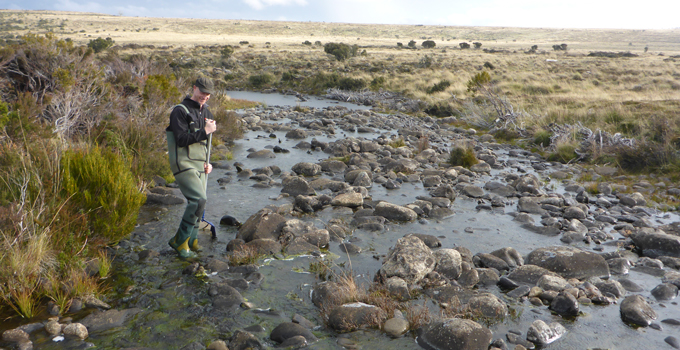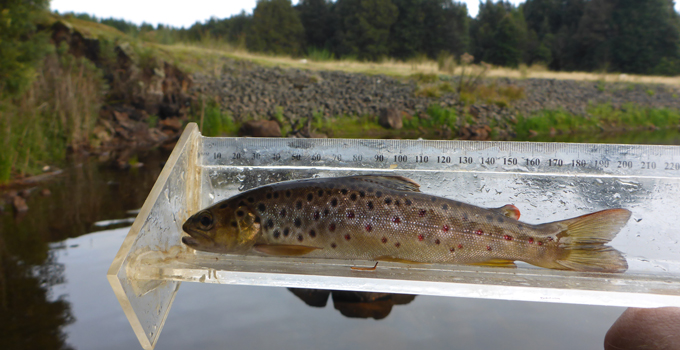THOUGHT LEADERSHIP
Early action is the best approach for operational environmental management
Building, maintaining and operating power and water assets involves a level of environmental risk. If you can identify and manage these risks early, your projects or operations are far less likely to run into trouble down the track.

Power and water utilities can incur major penalties when natural values are insufficiently understood and poorly managed. Not only could the environment be damaged, but there could also be penalties for a compliance breach, increased costs and conditions for construction and operation, significant remediation costs, project disruption and delays, and delivery overruns.
On top of all of this, there’s no doubt that poor environmental management will damage your corporate reputation and reduce your level of acceptance by and engagement with the community and stakeholders, both at and potentially far beyond the local area.
Power and water asset owners and developers manage or have influence over large areas of natural assets. These environments often include flora and fauna on land and in waterways that are listed as threatened under state and national environmental legislation and/or international agreements.
A land manager or owner with a strong environmental management system will know and proactively manage these values. However, in many areas there is a lack of knowledge of natural values, which are consequently not included in an environmental management framework. These values are therefore at risk of adverse effects from operational decisions.
So what can you do to make sure you have a handle on your environmental risks?
Find out what you’ve got
A thorough review of available information will help you better understand the values you need to manage.
This means using existing data-sets and reports to understand the current knowledge base and identify any gaps. In other words, create an inventory of natural values for all your land and water assets. You will need to identify the flora, fauna and ecological community values on your land and in your waterways and lakes, and record their condition and their status.

To understand the social values associated with your assets, you may also need to engage with other stakeholders and local communities to understand how they value and use your natural assets (e.g. fisheries, recreational users, water supply, transportation), as this will also influence management.
Incorporating the data into a spatial database accessible to everyone in the business will allow easy searching for flora and fauna values that may be affected by maintenance activities or new projects and ensure that relevant information about your natural assets is readily available for managers and field staff. However, this phase only identifies issues, and the degree of impact of a proposed management action on flora and fauna values is likely to require further interpretation by an ecologist.
If gaps are detected in the data or there is doubt about accuracy, field surveys can identify and verify natural values and record their condition. For example, vegetation and /or habitats have often been mapped from aerial photos and not verified in the field, so errors can arise in the attribution of a vegetation community or habitat type.
Understand your compliance requirements
Once you know what’s on your land or in your water, you can identify the potential regulatory and compliance issues.
Are there threatened species or communities listed under state or national legislation or international agreements? Are there weed or pest species or communities that have legislative requirements? Does analysis of existing water quality data highlight any trends that may affect values within the water-body or downstream (e.g. increased nutrient loading)?
If you already know what natural values you have on your land or water, you’ll be in a much better position to respond effectively to any legislative changes. You may even be ahead of the game!
Identify potential risks and their significance
Identifying and understanding risks to natural values under current and future operational scenarios is critical to successful and proactive environmental management. This requires some ‘big picture’ thinking in which the whole landscape, both terrestrial and aquatic, is considered.
A big-picture approach focuses on risks to ecological communities or functional ecosystems (e.g. wetland, lake or river) rather than extrapolating from localised information that may not reflect the broader risks. For example, to manage species at a habitat level rather than at site level, you need to identify and map habitat for threatened species across your natural assets as well as assess habitat quality.
In another example, a big-picture approach to water quality would involve having an understanding of the natural range of parameters at the local catchment scale, which may be different to recommendations in national water quality guidelines due to natural local conditions (such as the relatively low pH of tannic water bodies in peatland landscapes).

Many project risks can be mitigated if they are properly anticipated early and managed throughout the life of the project, minimising corporate, technical, environmental and social impacts and their associated costs. Having a comprehensive inventory of your natural assets will allow any threatened species or important ecological communities to be identified early in the planning phase for upgrades of existing assets or new projects. This will make the difference in understanding the effort required to avoid or minimise impacts.
The planning process is likely to be expedited because you will already know what your potential environmental impacts are and will have accounted for them in your project design, planning approval documentation and operational management plan.
This informed management approach also applies to maintenance programs, particularly weed and vegetation management, on easements and around assets. If you know where your high-value natural assets are, they can be accounted for in the maintenance program so that they will be protected.
Develop management approaches
Knowing which natural values require active management and which values may be best left alone is another key factor for successful environmental management.
Some natural values may be protected by default because they are associated with assets that are not accessible to the public (e.g. remote assets or those closed to the public because of safety risks). These natural values, particularly in intact remote wild areas, may be best managed by being left alone without any management intervention because they are not under pressure from human activities.
Other natural values may need active management and protection because they are under threat from human activities, introduced species or diseases. In this case, you need to consider the potential issues and consequences, plus the likelihood of them occurring, to evaluate the potential risk and significance of the issue.
Where the risk level is considered to be high, identify how the risk can be mitigated (e.g. restricting public access to a sensitive area while directing access to another less-sensitive area). Potential mitigation measures are generally best identified in consultation with other stakeholders, including user groups and the local community, to ensure that the measures are supported and endorsed by the community for greater success.
For example, an important conservation site such as a lake that supports threatened fish as well as recreational fish species will require a management approach supported by the angling community. That might mean developing hardened access points (e.g. tracks and boat ramps) in less-sensitive areas supported by anglers. Otherwise anglers will continue to develop their own access points, degrading lakeside habitats and potentially affecting important breeding or foraging habitat for threatened species.
Identify opportunities
If you proactively identify and manage the environmental values for which you are responsible, you may even stand to reap a range of extra benefits. You may identify natural values with potential economic and environmental value beyond the obvious.
For example, native vegetation in good condition on your land could be used to offset the loss of native vegetation associated with other projects you undertake. Or, possibly, land in good condition could be made available to other proponents for purchase as offsets for their projects. These hidden opportunities could be very valuable and make a major difference to project viability.
If you can make structured and systematic efforts to manage environmental issues proactively, you are far more likely to achieve environmental sustainability, as well as pave the way for project success, social licence and a positive reputation. For power and water asset developers and utilities, a genuine commitment and responsible approach to achieving greater operational sustainability is increasingly recognised as a key marker of success and corporate reputation.
Don’t wait. Act now to understand and manage your environmental risks.
If you would like to discuss how Entura can assist you with minimising risks and increasing sustainability, please contact Ray Brereton on +61 417 336 407.
About the author
Dr Eleni Taylor-Wood is Entura’s Principal Consultant, Environmental and Social Science. Eleni has 20 years’ experience successfully managing large-scale, complex projects, as well as providing expert advice and independent review for a range of infrastructure and planning projects. She has worked on projects around the world including in Australia, Mozambique, South Africa, Iceland, Colombia, India, Malaysia, China, Solomon Islands, Fiji and Papua New Guinea. Her experience includes environmental and social impact assessment and management, strategic management of wetlands and waterways, feasibility and approvals for new hydropower projects, environmental flow determination and assessment, and sustainability assessments. Eleni is currently one of eleven accredited assessors worldwide under the Hydropower Sustainability Assessment Protocol.
Raymond Brereton is a senior ecologist with 30 years’ experience in the field of fauna and flora survey and management. He has been involved in assessing the impacts of development on flora and fauna and their habitats, as well as providing advice on the development and implementation of policy and prescriptions for fauna and flora management across south-eastern Australia (Queensland, New South Wales, Victoria, South Australia and Tasmania). Raymond has a high level of technical expertise in the assessment and the management of threatened species and communities in both terrestrial and aquatic ecosystems in compliance with regulatory requirements
MORE THOUGHT LEADERSHIP ARTICLES
4 July, 2018





